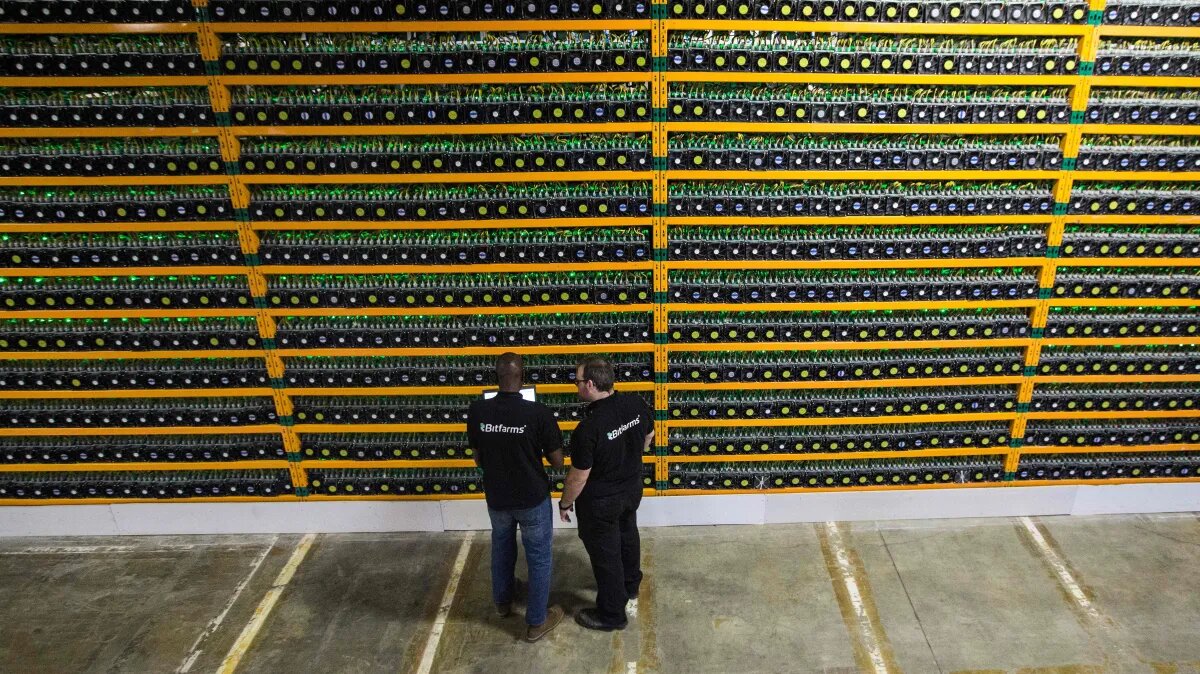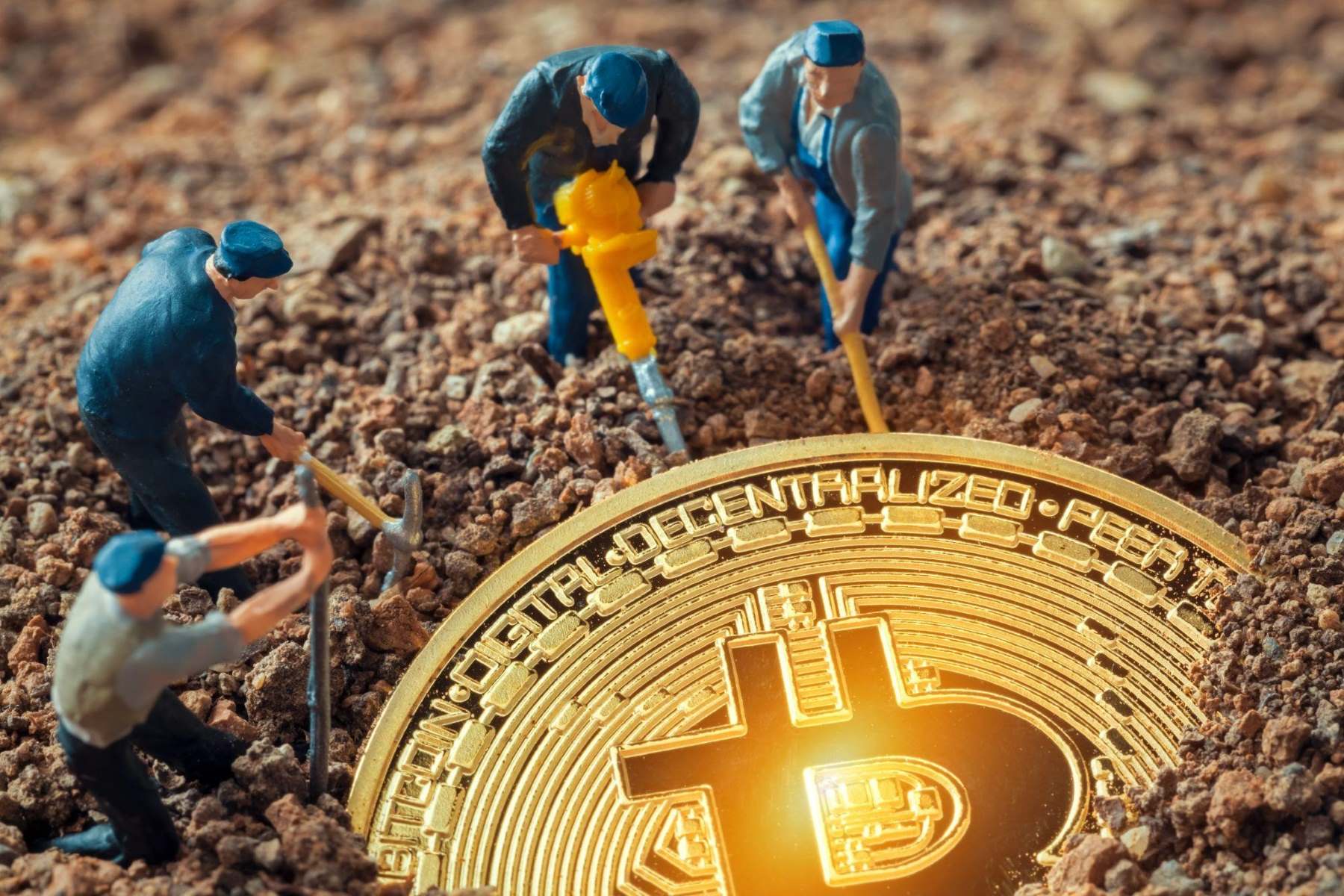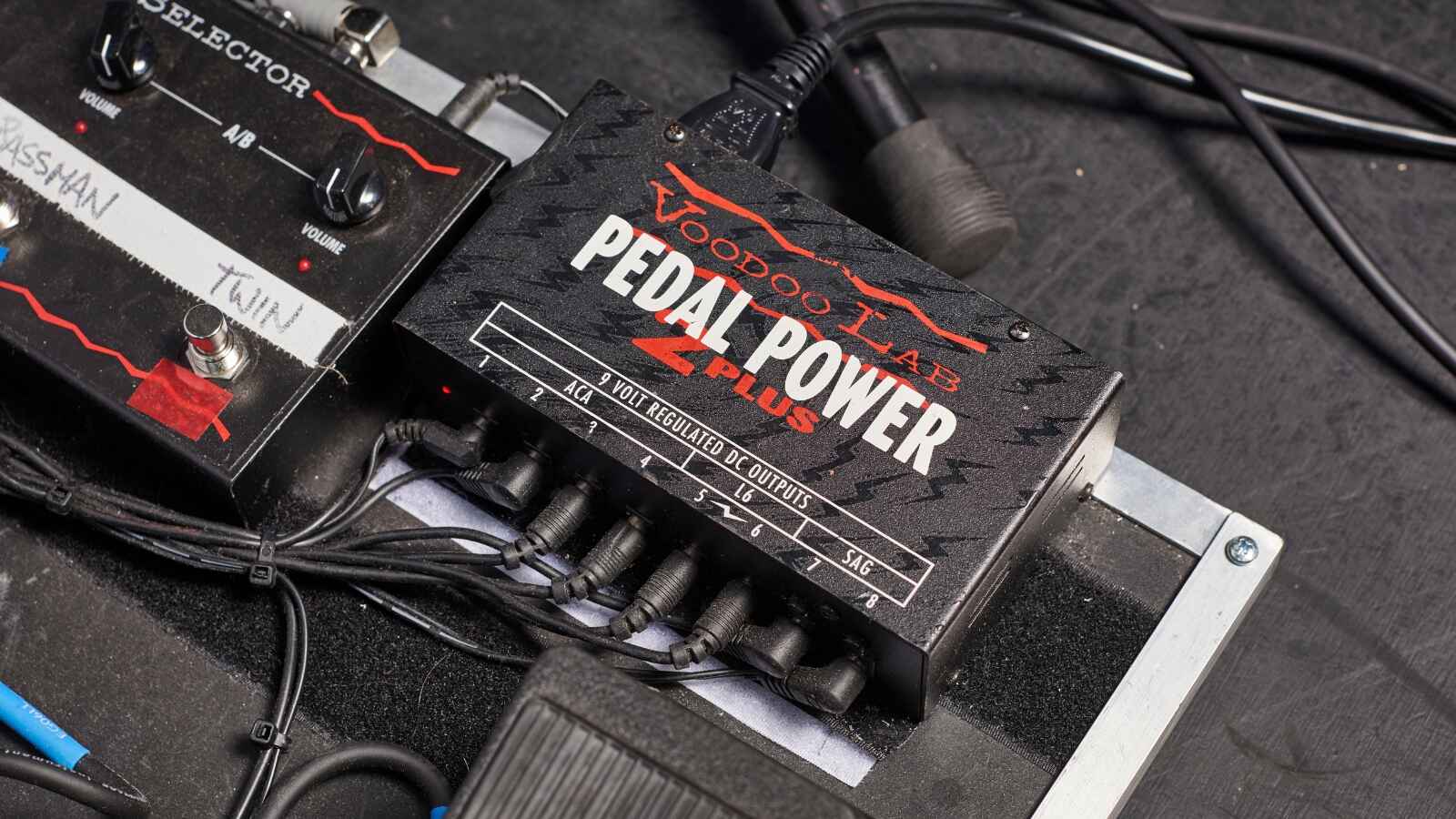What is Cryptocurrency?
Cryptocurrency is a digital or virtual form of currency, which uses cryptography for secure financial transactions, control the creation of additional units, and verify the transfer of assets. Unlike traditional forms of currency, such as cash or credit cards, cryptocurrency operates through decentralized networks based on blockchain technology.
Blockchain, the underlying technology behind cryptocurrency, is a distributed ledger that records all transactions across multiple computers, ensuring transparency, security, and immutability. This technology eliminates the need for intermediaries like banks or governments to oversee financial transactions.
One of the key features of cryptocurrency is its decentralization. Unlike traditional fiat currencies, which are controlled by central banks, cryptocurrencies are not controlled by any central authority. This decentralized nature gives users more control over their financial transactions and provides resistance against censorship and government interference.
Cryptocurrencies are often referred to as digital or virtual currencies because they exist only in digital form. They are not physical coins or banknotes that can be held in your hand. Instead, cryptocurrencies are stored in digital wallets, which can be accessed through various online platforms and mobile applications.
Bitcoin, introduced in 2009, was the first cryptocurrency and remains the most well-known and widely used. However, since then, thousands of other cryptocurrencies, commonly known as altcoins, have emerged, each with its own unique features and purposes.
Cryptocurrencies offer several advantages over traditional forms of currency. They provide fast and secure transactions, lower fees compared to traditional banking systems, and global accessibility without the need for a centralized authority to verify transactions.
Moreover, cryptocurrencies have gained popularity as investment assets, with their values often experiencing significant fluctuations. Many people buy and hold cryptocurrencies with the hopes of profiting from their price appreciation over time.
As the popularity of cryptocurrencies continues to grow, they are becoming more widely accepted as a form of payment by businesses and online retailers. Additionally, the technology behind cryptocurrencies, blockchain, has applications beyond finance, such as supply chain management, digital identity verification, and decentralized applications (DApps).
In summary, cryptocurrency is a digital form of currency that operates through decentralized networks based on blockchain technology. It provides users with financial autonomy, security, and the potential for investment opportunities. As the world becomes increasingly digital, the role of cryptocurrencies is likely to continue to expand.
What is Mining?
Mining in the context of cryptocurrencies refers to the process of validating and verifying transactions on a blockchain network. It is an essential function that ensures the integrity, security, and decentralization of the network. In simple terms, mining is the process of adding new transactions to the blockchain and achieving consensus among network participants.
In a traditional financial system, transactions are verified by a central authority, such as a bank. However, in a decentralized blockchain network, there is no central authority. Instead, miners play a crucial role in validating and timestamping transactions to maintain the trust and security of the network.
Cryptocurrency mining involves solving complex mathematical problems using powerful computers. Miners compete with each other to find the solution to a mathematical puzzle, called a hash. The first miner to solve the puzzle broadcasts the solution to the network, and other miners verify it. Once the solution is verified, the miner adds the new block of transactions to the blockchain.
Why would someone want to become a miner? The process of mining is incentivized by the rewards that miners receive for their efforts. In most cases, miners are rewarded with newly minted cryptocurrency coins. For example, in the case of Bitcoin, miners are rewarded with newly minted bitcoins along with transaction fees.
Mining requires specialized hardware known as mining rigs, which are designed to perform complex calculations quickly and efficiently. These rigs are equipped with powerful processors, high-speed graphics cards, and ample memory to handle the computational requirements of mining.
It’s worth mentioning that the mining process consumes a significant amount of energy. The computational power required for mining, along with the energy-intensive nature of the hardware, has raised concerns about the environmental impact of cryptocurrency mining.
There are different mining algorithms used by various cryptocurrencies. The most common algorithm is called Proof of Work (PoW), used by Bitcoin and many others. In PoW, miners compete to find a solution to a mathematical problem, and the first miner to solve it gets to add the next block to the blockchain.
Another mining algorithm gaining popularity is Proof of Stake (PoS). With PoS, the ability to mine new blocks and validate transactions is based on the number of coins a miner holds and “stakes” as collateral. This approach is seen as more energy-efficient and environmentally friendly.
In summary, cryptocurrency mining is the process of validating and verifying transactions on a blockchain network. Miners compete to solve complex mathematical problems, add new transactions to the blockchain, and maintain the security and integrity of the network. While it requires specialized hardware and consumes energy, mining plays a crucial role in the decentralized nature of cryptocurrencies.
How Does Cryptocurrency Mining Work?
Cryptocurrency mining is a complex and resource-intensive process that involves several key components. Let’s take a closer look at how cryptocurrency mining works:
1. Transaction Verification: Miners collect and validate transactions from users within the network. These transactions are grouped into blocks, which are essentially a collection of verified transactions waiting to be added to the blockchain.
2. Hash Function: Miners use a cryptographic hash function, which takes an input (the data from the block) and produces a unique output of fixed length. This output is known as a hash. The hash function is crucial for maintaining the security and integrity of the network.
3. Proof of Work: In a Proof of Work (PoW) system, miners compete to solve a complex mathematical problem known as a hash puzzle. The puzzle is computationally intensive, requiring substantial computational power and energy consumption. The first miner to solve the puzzle adds the block of transactions to the blockchain and receives a reward for their efforts.
4. Consensus Mechanism: The successful miner broadcasts the solution to the puzzle to the network, and other miners verify and validate the solution. Consensus is achieved when a majority of miners agree on the validity of the solution and add it to their copy of the blockchain. This process ensures the decentralization and security of the network.
5. Block Reward: Miners who successfully add a block to the blockchain are rewarded with newly minted cryptocurrency coins. This reward serves as an incentive for miners to continue their computational efforts and maintain the security and functionality of the network. In addition to the block reward, miners may also receive transaction fees associated with the transactions included in the block.
6. Difficulty Adjustment: The difficulty of the hash puzzle is adjusted regularly to maintain a consistent block creation rate. As more miners join the network, the difficulty increases to ensure that blocks are not added too quickly. This adjustment prevents the blockchain from being flooded with new transactions and helps maintain stability.
7. Mining Pools: Mining has become highly competitive, making it challenging for individual miners to mine cryptocurrency effectively. To overcome this, miners often join mining pools, where they pool their computing resources and work together to solve the hash puzzles. If a pool successfully mines a block, the rewards are distributed among the participants based on their contribution.
8. Energy Consumption: Cryptocurrency mining requires a significant amount of computational power, which translates to a substantial energy consumption. The energy-intensive nature of mining has raised concerns about its environmental impact. However, innovative approaches are being explored, such as transitioning to more energy-efficient mining algorithms like Proof of Stake (PoS).
In summary, cryptocurrency mining is a process that involves transaction verification, the use of hash functions, solving complex mathematical problems, consensus mechanisms, block rewards, difficulty adjustments, and potentially joining mining pools. It is a crucial element in maintaining the security, integrity, and decentralization of cryptocurrencies.
Mining Equipment and Hardware
Mining cryptocurrency requires specialized hardware and equipment designed to handle the computational requirements of the mining process. Let’s explore the key components of mining equipment:
1. Mining Rigs: Mining rigs are the core components of mining equipment. These are powerful computer systems purpose-built for cryptocurrency mining. Mining rigs consist of multiple high-performance GPUs (Graphics Processing Units) or ASIC (Application-Specific Integrated Circuit) chips. These specialized components are capable of performing the complex mathematical calculations required for mining.
2. Graphics Processing Units (GPUs): GPUs are commonly used in mining rigs, especially for cryptocurrencies that are based on the Proof of Work (PoW) consensus algorithm. GPUs are known for their parallel processing capabilities, which allow them to handle multiple calculations simultaneously. This makes them ideal for performing the hash calculations required for mining.
3. Application-Specific Integrated Circuits (ASICs): ASICs are specialized hardware devices designed specifically for mining cryptocurrencies. They are highly efficient at performing the calculations needed for mining and are particularly popular for mining Bitcoin and some other cryptocurrencies. ASICs are purpose-built and offer superior computational power, energy efficiency, and faster mining speeds compared to GPUs.
4. Power Supply Units (PSUs): Mining rigs consume a significant amount of power, so reliable and efficient power supply units are crucial. PSUs with high wattage ratings are necessary to ensure stable and uninterrupted power supply to the mining rig, even under heavy load. It is important to choose PSUs that are energy-efficient to minimize electricity costs.
5. Cooling Systems: Mining rigs generate a considerable amount of heat due to the intensive computational tasks involved in mining. To prevent overheating and ensure optimal performance, proper cooling systems are essential. This can include fans, heatsinks, or liquid cooling solutions. Adequate ventilation and airflow within the mining facility or setup are also crucial to maintain optimal temperatures.
6. Mining Software: Apart from the hardware components, mining software plays a vital role in the mining process. Mining software is responsible for communicating with the mining hardware, coordinating the mining operation, and connecting to the mining pool or blockchain network. Different cryptocurrencies may require specific mining software, so it’s important to use compatible software for the chosen cryptocurrency.
7. Mining Pools: Joining a mining pool is a popular option for miners, especially for those with limited resources or computing power. Mining pools allow multiple miners to combine their computational resources to collectively solve the hash puzzles and increase the chances of successfully mining a block. The rewards earned from mining are then distributed among the pool participants based on their contribution.
8. Upkeep and Maintenance: Regular maintenance of mining equipment is crucial to ensure its optimal performance and longevity. This includes cleaning the components, replacing worn-out parts, and updating software when necessary. It’s also important to monitor the mining operation regularly, including checking for hardware errors, monitoring temperatures, and adjusting settings to achieve optimal mining efficiency.
In summary, mining equipment for cryptocurrency mining includes specialized mining rigs, GPUs, ASICs, power supply units, cooling systems, mining software, and potentially joining mining pools. It is important to choose high-quality and efficient hardware components while considering factors like computational power, energy consumption, and cooling capacity to maximize mining efficiency.
Mining Pools
Mining pools play a significant role in the world of cryptocurrency mining by providing a collaborative approach for miners to combine their computational resources. Mining pools allow individual miners to work together and increase their chances of successfully mining blocks. Let’s dive deeper into mining pools and how they function:
1. Pool Formation: Mining pools are formed when a group of miners combines their resources and computing power to collectively solve the complex mathematical problems required for mining. Miners join a pool by connecting their mining hardware to a specific mining pool’s server.
2. Increased Chances of Success: By joining a mining pool, miners increase their chances of successfully mining a block. When a pool solves a mathematical problem and mines a block, the rewards are distributed among the participants based on their contribution, typically in proportion to the computational power they provide to the pool.
3. Combining Computational Resources: Mining pools allow individual miners to pool their computational resources, such as processing power and hashing capabilities, to collectively solve computational puzzles and validate transactions. This collaborative effort increases the chances of finding a solution faster compared to mining individually.
4. Regular Reward Distribution: Mining pools typically distribute rewards based on the concept of shares. As miners work on finding solutions, they generate shares, which are partial solutions to the mathematical problems. Each share represents a miner’s contribution to finding a solution. Once the pool successfully mines a block, the rewards are distributed among participants based on the number of valid shares they contributed.
5. Pool Fees: Mining pools often charge a small fee for their services, usually a percentage of the rewards earned by the miners. These fees help cover the costs of maintaining the mining pool infrastructure, including server maintenance, software updates, and other operational expenses. Miners should consider the fee structure when choosing a mining pool.
6. Pool Difficulty: Mining pools adjust the difficulty level of the mining problems for participants based on their computational power. This adjustment ensures that miners with higher hash rates do not dominate the pool’s mining power. It allows for fair distribution of rewards and encourages participation from miners with varying levels of computational resources.
7. Centralized vs. Decentralized Pools: Mining pools can be centralized or decentralized. Centralized pools are managed by a single entity that controls the pool’s operation, while decentralized pools operate on a peer-to-peer basis with no central authority. Decentralized pools offer more security and reduce the risk of a single point of failure or manipulation.
8. Choosing a Mining Pool: When selecting a mining pool, miners should consider factors such as pool reputation, size, stability, fees, payout methods, and geographic location. It’s important to choose a pool with a good track record, trustworthy operators, and a fair reward distribution system that aligns with the miner’s goals.
In summary, mining pools provide a collaborative approach for miners to combine their computational resources, increase their chances of successfully mining blocks, and receive proportional rewards. By pooling resources, miners can achieve a more consistent income from mining and mitigate the risks associated with mining individually.
Proof of Work vs. Proof of Stake
Proof of Work (PoW) and Proof of Stake (PoS) are two different consensus algorithms used in blockchain networks to achieve consensus and validate transactions. Let’s explore the differences between these two approaches:
Proof of Work (PoW): PoW is the original consensus algorithm introduced by Bitcoin. In the PoW algorithm, miners compete to solve complex mathematical puzzles, known as hash puzzles, to validate transactions and add blocks to the blockchain. The mining process requires substantial computational power and energy consumption. The first miner to solve the puzzle is rewarded with newly minted cryptocurrency coins. PoW provides a high level of security and has proven to be effective but is energy-intensive and requires significant computational resources.
Proof of Stake (PoS): PoS is an alternative consensus algorithm that aims to address the energy consumption and scalability issues associated with PoW. In PoS, validators are chosen to create new blocks and validate transactions based on the number of cryptocurrency coins they hold and “stake” as collateral. Validators are selected based on a deterministic formula that considers the amount of stake they have. Validators who maliciously act against the network lose their staked coins. PoS is considered more energy-efficient and cost-effective compared to PoW, as it doesn’t require extensive computational power and consumes significantly less energy.
Security: PoW has a proven track record of providing a high level of security. The computational power required for PoW mining makes it difficult for malicious actors to take over the network. PoS also provides security, but the level of security depends on the distribution of coins among the validators. Networks with a high concentration of wealth may be more vulnerable to attacks.
Scalability: PoW can face scalability challenges due to the computational power and energy consumption required. As more miners join the network, the competition increases, making it harder and slower to mine new blocks. PoS, on the other hand, can offer better scalability as new blocks are created by validators based on their stake, without the need for resource-intensive computations.
Energy Efficiency: PoW has been criticized for its significant energy consumption, as miners need to continuously perform computational work to solve the hash puzzles. PoS, being less resource-intensive, is considered more energy-efficient and environmentally friendly, as it doesn’t require extensive computational power.
Decentralization: Both PoW and PoS can achieve decentralization, but the mechanisms vary. In PoW, decentralization is maintained by the widespread distribution of mining power among miners. In PoS, decentralization is achieved through the distribution of stake among validators. However, the concentration of wealth may influence the level of decentralization in PoS networks.
Implementation and Adoption: PoW is more widely used and established, with Bitcoin being the prime example of PoW in action. PoS has gained momentum and is being used by various cryptocurrencies, including Ethereum 2.0, Cardano, and Tezos. The transition from PoW to PoS can be complex and requires careful consideration and community consensus.
Hybrid Approaches: Some blockchain networks combine elements of both PoW and PoS, creating hybrid consensus algorithms. These hybrid approaches aim to combine the security of PoW with the energy efficiency of PoS, offering the benefits of both algorithms.
In summary, both PoW and PoS are consensus algorithms used in blockchain networks to achieve consensus and validate transactions. While PoW requires extensive computational power and energy consumption, PoS offers a more energy-efficient approach by relying on validators’ stake instead of computational work. The choice between PoW and PoS depends on factors such as security, scalability, energy efficiency, decentralization goals, and the specific requirements of a blockchain network.
The Role of Miners in the Blockchain
Miners play a crucial role in maintaining the integrity, security, and decentralization of blockchain networks. Their role goes beyond simply validating transactions and adding blocks to the blockchain. Let’s explore the key responsibilities and functions of miners within the blockchain ecosystem:
1. Transaction Validation: Miners are responsible for validating transactions within the blockchain network. They verify that transactions are legitimate and comply with the predefined rules and protocols of the network. Through cryptographic algorithms and consensus mechanisms, miners ensure the accuracy and trustworthiness of transactions.
2. Block Creation and Validation: Miners are essential in the creation of new blocks that contain a batch of verified transactions. They compete to solve complex mathematical puzzles and add new blocks to the blockchain. This process involves solving computational problems known as hash puzzles and requires significant computational power and energy consumption.
3. Consensus Building: Miners facilitate consensus building within the blockchain network. Through their computational efforts, they help achieve agreement and validate the integrity of transactions across the network. Consensus ensures that all participants in the network have a shared, accurate, and agreed-upon version of the blockchain.
4. Maintaining Network Security: Miners play a vital role in maintaining the security of blockchain networks. Their computational power and competitive nature make it difficult for malicious actors to manipulate or fraudulently alter the blockchain. Miners deter potential attacks and ensure the immutability of the blockchain by making it economically and computationally expensive to modify past transactions.
5. Incentive Mechanisms: To motivate miners to expend computational resources and participate in securing the network, blockchain protocols typically offer rewards to successful miners. These rewards can come in the form of newly minted cryptocurrency coins and transaction fees associated with the transactions included in the blocks. Incentives encourage miners to continue their efforts and maintain the functionality and security of the blockchain.
6. Network Decentralization: Miners contribute to the decentralization of blockchain networks by distributing the computational power and decision-making across a diverse set of participants. Their participation ensures that no single entity can gain control over the network, preventing centralization and promoting a more democratic and resilient system.
7. Network Maintenance: Miners also play a role in maintaining the overall health and efficiency of the blockchain network. They monitor the network for potential issues, such as transaction delays or network congestion, and take appropriate actions to improve network performance and stability. Miners may also contribute to the development and improvement of the network through software updates and protocol enhancements.
8. Transition to New Consensus Mechanisms: Miners may also be involved in the transition from one consensus mechanism to another. For example, in the shift from Proof of Work (PoW) to Proof of Stake (PoS), miners may need to adapt their mining operations and hardware to support the new consensus mechanism. Their participation and cooperation are crucial during these transitions for the successful evolution of the blockchain network.
In summary, miners have a vital role in the blockchain ecosystem. They validate transactions, create and validate new blocks, facilitate consensus building, maintain network security, contribute to decentralization, receive incentives for their efforts, and help with network maintenance and evolution. Their participation ensures the functionality, security, and integrity of blockchain networks.
Rewards for Miners
Miners play a significant role in the operation and security of blockchain networks, and they are rewarded for their efforts and contributions. These rewards serve as incentives for miners to participate in the network and expend computational resources. Let’s explore the various types of rewards that miners receive:
1. Newly Minted Cryptocurrency: One of the primary rewards for miners is the opportunity to receive newly minted cryptocurrency coins. When a miner successfully mines a new block and adds it to the blockchain, they are rewarded with a certain amount of cryptocurrency. This reward mechanism ensures the continuous production and circulation of new cryptocurrency units within the network.
2. Transaction Fees: In addition to the newly minted cryptocurrency, miners also receive transaction fees associated with the transactions included in the blocks they mine. When users initiate transactions on the blockchain network, they pay a small fee to prioritize their transaction and encourage miners to include it in the next block. These transaction fees can vary depending on the network congestion, the transaction size, and the priority set by the user.
3. Fair Distribution: The distribution of rewards among miners generally follows predetermined rules and protocols. The specific mechanism can vary depending on the blockchain network. In some cases, rewards are distributed equally among miners within a certain timeframe. In other cases, rewards are distributed based on the proportion of computational power contributed by each miner or the number of shares they accumulate through their mining activities.
4. Mining Pool Rewards: Miners who participate in mining pools usually share the rewards they receive based on their contribution to the pool’s computational power. Mining pools often charge a small fee for their services, which helps cover operational expenses. The remaining rewards from successfully mined blocks are then distributed among the participants in the pool, usually proportional to their contribution.
5. Incentive Reduction: Many blockchain networks, such as Bitcoin, incorporate mechanisms to reduce mining rewards over time. This is usually done through a process called halving, where the block reward is reduced by a specific percentage after a certain number of blocks are added to the blockchain. This reduction in rewards is designed to control the inflation rate of the cryptocurrency and create scarcity, which can potentially increase its value over time.
6. Economic Motivation: The rewards received by miners are an economic motivation for their participation and efforts. The profitability of mining depends on factors such as the cost of electricity, hardware expenses, and the market value of the mined cryptocurrency. Miners need to carefully consider these factors to ensure their mining activities remain financially viable.
7. Network Contribution: Aside from the direct financial rewards, miners also contribute to the network’s functionality, security, and decentralization by participating in the validation and consensus processes. Their efforts help maintain the integrity and efficiency of the blockchain network, making it more robust and valuable for all participants.
In summary, miners are rewarded for their role in blockchain networks. They receive newly minted cryptocurrency coins, transaction fees, and rewards from mining pools. These rewards serve as incentives for miners to participate and contribute computational power to the network, ensuring its security, integrity, and continuous operation. Additionally, miners contribute to the overall functionality and decentralization of the network through their validation and consensus efforts.
Energy Consumption and Environmental Impact
One of the key concerns associated with cryptocurrency mining is its significant energy consumption and its potential environmental impact. Mining cryptocurrencies, especially those that use the Proof of Work (PoW) consensus algorithm, requires a substantial amount of computational power and electricity. Let’s delve into the energy consumption and environmental considerations related to cryptocurrency mining:
1. Energy Consumption: Cryptocurrency mining operations consume massive amounts of electricity due to the intensive computational tasks involved. The mining process requires powerful hardware, such as ASICs or GPUs, which consume significant energy to solve the cryptographic puzzles and validate transactions. As a result, mining can have a high carbon footprint, especially when relying on electricity generated from fossil fuels.
2. Carbon Emissions: The energy-intensive nature of cryptocurrency mining can contribute to carbon emissions and have a negative impact on the environment. Many mining operations rely on electricity generated from fossil fuels such as coal or natural gas, which release greenhouse gases into the atmosphere. This can lead to increased carbon emissions and contribute to climate change.
3. Renewable Energy Adoption: To mitigate the environmental impact of cryptocurrency mining, there has been a growing interest in transitioning mining operations to renewable energy sources. Miners are increasingly exploring options for using clean energy, such as solar or wind power, to power their mining rigs. By switching to renewable energy, miners can reduce their carbon footprint and promote a more sustainable mining industry.
4. Energy Efficiency: Another approach to addressing the environmental impact of mining is to focus on improving the energy efficiency of mining operations. This includes using more energy-efficient mining hardware, optimizing mining algorithms, and implementing advanced cooling techniques to reduce energy consumption. Energy-efficient mining can help lower energy costs and minimize the environmental footprint of mining activities.
5. Sustainable Mining Practices: Miners and mining pool operators are increasingly adopting sustainable mining practices. This includes implementing responsible energy management, optimizing hardware utilization, and participating in initiatives that promote responsible mining. Sustainability certifications and transparency initiatives can also help distinguish environmentally conscious mining operations.
6. Transition to Proof of Stake: Many blockchain networks, including Ethereum, are planning to transition from PoW to the more energy-efficient Proof of Stake (PoS) consensus algorithm. PoS requires validators to hold and “stake” a certain amount of cryptocurrency instead of relying on computational power. This shift can significantly reduce energy consumption and carbon emissions associated with mining.
7. Regulatory Considerations: Governments and regulatory bodies are starting to address the energy consumption and environmental impact of cryptocurrency mining. Some regions are exploring regulations and incentives to encourage the use of renewable energy for mining operations. Such measures aim to promote sustainability and create a more environmentally friendly mining industry.
8. Innovation and Research: Continued research and development in the field of cryptocurrency mining can drive innovation and promote the adoption of more environmentally friendly mining practices. This includes exploring alternative consensus mechanisms, optimizing mining algorithms, and developing more energy-efficient mining hardware.
In summary, cryptocurrency mining’s energy consumption and environmental impact are important considerations. Miners, industry stakeholders, and regulators are working towards reducing the carbon footprint of mining operations, exploring sustainable practices, transitioning to energy-efficient consensus mechanisms like PoS, and increasing the use of renewable energy sources. These efforts aim to create a more sustainable and environmentally friendly mining industry.
Challenges and Risks of Mining Cryptocurrency
Mining cryptocurrency presents several challenges and risks that miners must navigate. These challenges range from technical hurdles to economic considerations and security risks. Let’s explore some of the common challenges and risks associated with mining cryptocurrency:
1. Mining Difficulty and Competition: The mining difficulty of cryptocurrencies gradually increases over time as more miners join the network. This increased competition makes it harder for individual miners to mine new blocks and receive rewards. Miners must continuously upgrade their hardware or join mining pools to stay competitive.
2. Cost of Equipment and Electricity: Mining cryptocurrency requires significant investment in specialized mining equipment and a reliable and high-quality power supply. The cost of purchasing and maintaining this equipment, along with the electricity consumption, can impact profitability, especially in regions with high electricity costs.
3. Volatility and Market Fluctuations: The value of cryptocurrencies can be highly volatile, subject to unpredictable market fluctuations. Mining profitability depends on the market value of the mined cryptocurrency. Miners may face challenges when the market price undergoes significant fluctuations, affecting their revenue and overall profitability.
4. Technological Advancements: The field of cryptocurrency mining is constantly evolving, with advancements in hardware, software, and mining algorithms. Miners must stay updated with the latest technological developments and adapt their mining operations accordingly. Failure to keep up with technological advancements may result in reduced mining efficiency and competitiveness.
5. Regulatory Concerns: Cryptocurrency mining operates in a regulatory landscape that is continually evolving. Some jurisdictions have introduced regulations or restrictions on mining activities, such as licensing requirements or electricity usage limitations. Miners must comply with local regulations and stay informed about evolving legal requirements to avoid legal complications.
6. Security Risks: Mining operations face security risks such as hacking, malware, and phishing attacks. Miners are targeted by cybercriminals who aim to steal mining rewards or gain unauthorized access to mining hardware and software. Miners must implement robust security measures, including strong passwords, encryption, firewalls, and regular software updates, to mitigate these risks.
7. Environmental Impact: As discussed in the previous section, mining cryptocurrency has a significant energy consumption and potential environmental impact. The energy-intensive nature of mining, especially in PoW-based cryptocurrencies, raises concerns about carbon emissions and sustainability. Miners can address these challenges by transitioning to more energy-efficient mining algorithms or utilizing renewable energy sources.
8. Long-Term Viability: The long-term viability of mining depends on various factors, including the ongoing development and adoption of cryptocurrencies, market conditions, regulatory landscape, and technological advancements. Miners must carefully assess these factors and consider the potential risks and rewards associated with long-term mining operations.
In summary, mining cryptocurrency is not without its challenges and risks. Miners must navigate the difficulty and competition of mining, manage equipment and electricity costs, adapt to market fluctuations, stay abreast of technological advancements, comply with evolving regulations, address security risks, manage environmental impact, and assess the long-term viability of mining operations. By carefully managing these challenges and risks, miners can optimize their mining activities and contribute to the success of the blockchain ecosystem.
Conclusion
Cryptocurrency mining plays a vital role in the functioning of blockchain networks. Miners validate transactions, add new blocks to the blockchain, and ensure the security, integrity, and decentralization of the network. However, mining is accompanied by several considerations and complexities.
From the technical challenges of mining difficulty and competition to the economic considerations of equipment costs and market fluctuations, miners must navigate a dynamic landscape. They face regulatory concerns, security risks, and environmental impacts that require careful attention and proactive measures.
Despite the challenges, mining offers rewards for miners’ efforts and contributions. Rewards come in the form of newly minted cryptocurrency coins and transaction fees. These incentives motivate miners to participate, invest in mining hardware, and expend computational resources to maintain the network’s functionality and security.
As the cryptocurrency landscape evolves, miners must adapt to technological advancements, regulatory developments, and market conditions. They can explore energy-efficient practices, contribute to the shift towards renewable energy sources, and embrace emerging consensus mechanisms like Proof of Stake (PoS) to reduce their environmental footprint.
Miners are key participants in the blockchain ecosystem, contributing to the decentralization and stability of the network. Their role extends beyond transaction validation and block creation; they contribute to consensus building and network maintenance. By effectively addressing the challenges and risks associated with mining, miners can contribute to the success and longevity of the blockchain ecosystem.
As the world of cryptocurrency mining continues to evolve, it is essential for miners to stay informed, adapt to changing circumstances, and embrace sustainable practices. By doing so, miners can maximize their potential rewards, minimize risks, and contribute to the growth and advancement of the blockchain industry as a whole.

























